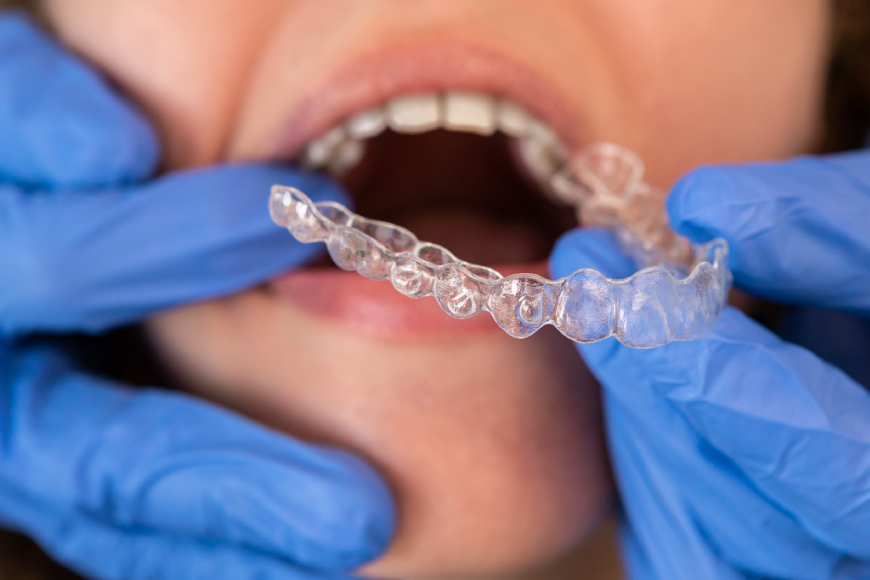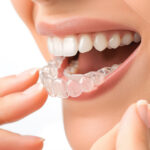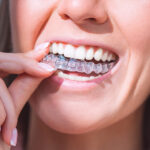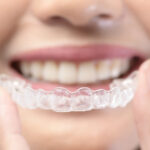If you’re considering teeth-straightening options, you’ve probably come across this question: Invisalign vs Braces? While both options can effectively straighten your teeth and correct orthodontic issues, they have distinct differences that may make one more suitable for you than the other.
Understanding the Basics
To begin, it’s essential to have a clear understanding of what Invisalign and braces are and how they work.
Invisalign
Invisalign is a state-of-the-art orthodontic treatment that uses a series of custom-made clear aligners to straighten teeth gradually. These aligners, made from a sturdy and virtually invisible plastic material, are designed to fit snugly over your teeth, exerting gentle pressure to move them into their desired positions.
Traditional Braces
Traditional braces consist of metal brackets that are bonded to your teeth and connected by a metal wire. This wire is tightened periodically by an orthodontist to gradually shift your teeth into alignment. Additionally, braces may incorporate rubber bands or other components to apply additional pressure to specific teeth or jaw alignment issues.
Which Option is Right for You?
-
Appearance
One significant advantage of Invisalign is its aesthetic appeal. The aligners are virtually transparent, making them much less noticeable than traditional metal braces. This feature is particularly appealing to adults and older teenagers who may feel self-conscious about wearing orthodontic devices. On the other hand, while braces may not be as aesthetically pleasing due to their metal components, they do offer the opportunity to express your personality with colorful elastic bands.
-
Comfort
When it comes to comfort, Invisalign aligners have the upper hand. The aligners are custom-made for your mouth, making them smooth and comfortable to wear. Traditional braces, on the other hand, can cause discomfort, especially shortly after adjustments when the pressure exerted on the teeth and gums is increased. Although discomfort is usually temporary, it can be a significant consideration for those looking for a pain-free experience.
-
Maintenance and Oral Hygiene
Maintaining good oral hygiene during orthodontic treatment is crucial to prevent gum disease and tooth decay. In this regard, Invisalign aligners provide a clear advantage. Since the aligners are removable, you can take them out to brush and floss your teeth as you normally would. With braces, cleaning can be more challenging as the brackets and wires can trap food particles and make brushing and flossing more time-consuming.
Additionally, eating is much easier with Invisalign because you can remove the aligners before meals. This means you can enjoy all your favorite foods without worrying about damaging your orthodontic device. With braces, certain foods, such as sticky candies and hard fruits, should be avoided to prevent damage to the brackets and wires.
-
Treatment Duration
The length of treatment varies depending on the severity of your orthodontic problem. In general, Invisalign treatment may take slightly less time than traditional braces. However, this is highly dependent on the individual case and the guidance provided by your orthodontist.
-
Cost Considerations
In terms of cost, traditional braces may be more affordable than Invisalign for some individuals. It’s crucial to consult with your orthodontist to determine the best option for your specific needs and budget. Keep in mind that the cost of orthodontic treatment can vary based on factors such as the complexity of your case, the region you live in, and any additional treatments required.
-
Effectiveness
Both Invisalign and traditional braces are effective at correcting a wide range of orthodontic issues, including overcrowding, gaps between teeth, misaligned bites, and more. Complex cases or severe malocclusions may require traditional braces, as they provide the orthodontist with more control over the teeth’s movement.
The decision between Invisalign and traditional braces depends on your specific needs, preferences, and budget. Consulting with a qualified orthodontist is crucial to determine the most suitable treatment option for you. At Madison Dentistry & Implant Center, we specialize in Invisalign treatments and provide comprehensive care for our patients. Our team of skilled professionals will evaluate your orthodontic needs and guide you towards the best course of treatment. Contact us today to schedule a consultation and take the first step towards achieving a straighter and healthier smile through 973-822-8003.




